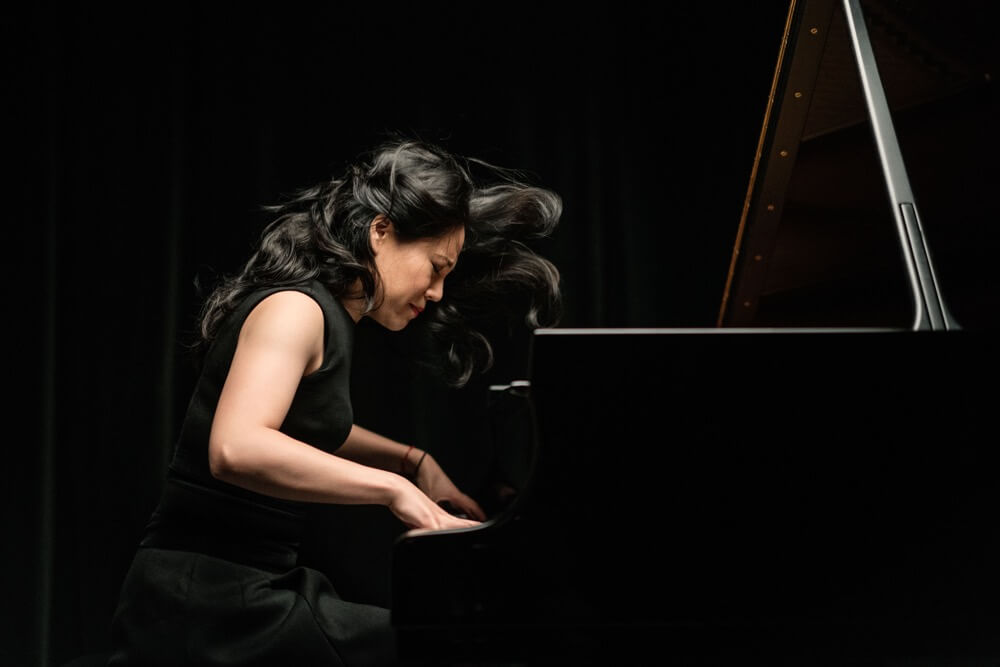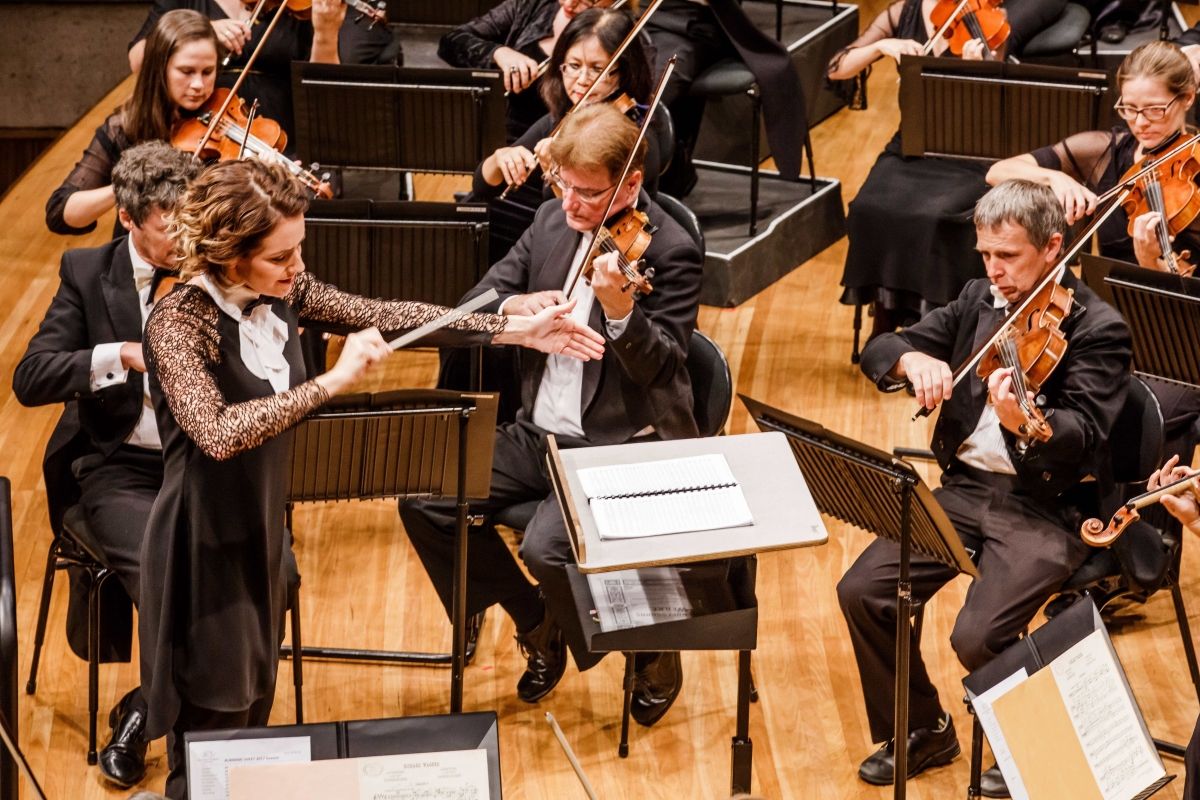With fingers curled, outstretched, clenched, separated, sweeping and always generating energy, conductor Alondra de la Parra’s left hand was riveting to watch as it shaped her interpretative vision for her first official engagement as the QSO’s new Music Director. It is also the Queensland Symphony Orchestra’s 70th birthday. Seventy years ago, in 1947, Wagner’s Tannhäuser Overture was the first item on the Orchestra’s programme. Doffing the cap to that event, it popped up again at the first Maestro Concert.
Overtures can be a throwaway, a romp, a warm up but to de la Parra and the QSO’s credit, the Tannhäuser breathed from the first utterance and embraced the crowd. The brass section, which shone throughout the concert, was the first cab off the rank as it ‘sang’ Wagner’s chorale phrases with a warm yet marbled tone. The playing made you listen as it steadily rose in power, the conductor casting long shapely lines from deeply involved players. When de la Parra’s face was visible, her expressions were refreshingly positive and radiated pride in her new orchestral family.
 Pianist Zhang Zou
Pianist Zhang Zou
What is it about they key of G minor? Dvořák, Saint-Saëns, Prokofiev and Ravel all wrote piano concertos in this tonal centre as did Mendelsohn in his showy Piano Concerto No 1, a sparkler that provided a bubbly antidote to Wagner’s bombastic rhetoric. In 1832 and 1833, Mendelssohn performed this showy concerto multiple times and always to great acclaim. Not a favourite of this reviewer, nevertheless soloist Zhang Zuo’s take was enjoyable. Her driven fingers had a take-your-breath-away velocity as she flew up and down the keys in the first movement and there were snappy exchanges between the piano and orchestra and a crisp attack at entries. But for all the Chinese pianist’s fiery virtuosic execution there was also eloquence and melting tenderness in the lyrical passages, gorgeous tone with confessional elements, exquisitely phrased.
 Alondra de la Parra and the Queensland Symphony Orchestra
Alondra de la Parra and the Queensland Symphony Orchestra
Mahler’s ideas in his Symphony No 1 – ‘the Titan’ – were grandiose; the orchestration called for a massively boosted instrumental force and the hour-long masterpiece was designed to reflect the world and the gamut of the human condition. For a composer who dreamed on such a grand scale Mahler had a kind of OCD about wanting every tiny detail, every nuance to be heard. And de la Parra strived to illuminate Mahler’s inspired colour combos, skillfully alternating the whopping foregrounded ‘wow’ outbursts with the softly hued, ‘distanced’ moments. The opening’s still serenity had a seductive sheen and the bird calls soared above a well-honed Mahlerian shimmer.
De la Parra’s pacing was distinctive. She captured the bounce and zest in the second movement’s earthy peasant dance and in the third, she realised the stark contrast between Mahler’s canonic, somber, rather oddball ‘Frere Jacques,’ theme introduced on double bass and the later jaunty Klezmer chimes. And the Symphony’s finale blazed with rewarding sonic power. Were there more depths to plumb? Yes, as there always will be in Mahler’s symphonic tour de force. Were there blemishes? Occasionally and yet as always in lively, exciting provocative and persuasive performance these were rendered insignificant.











Comments
Log in to join the conversation.